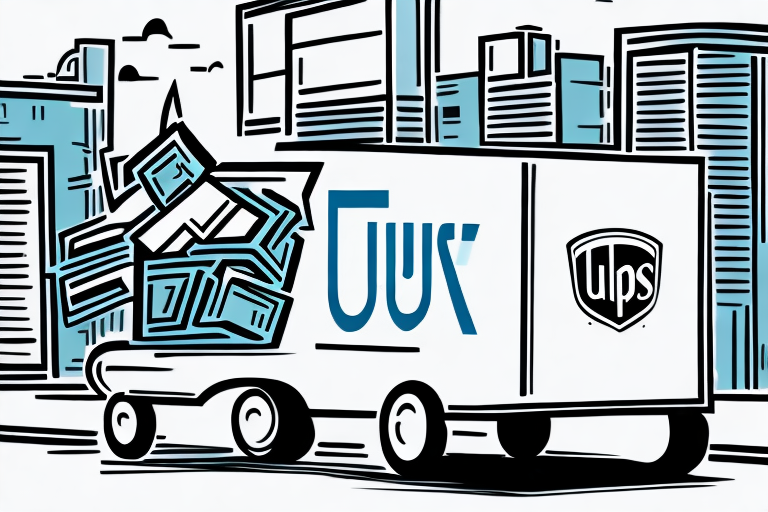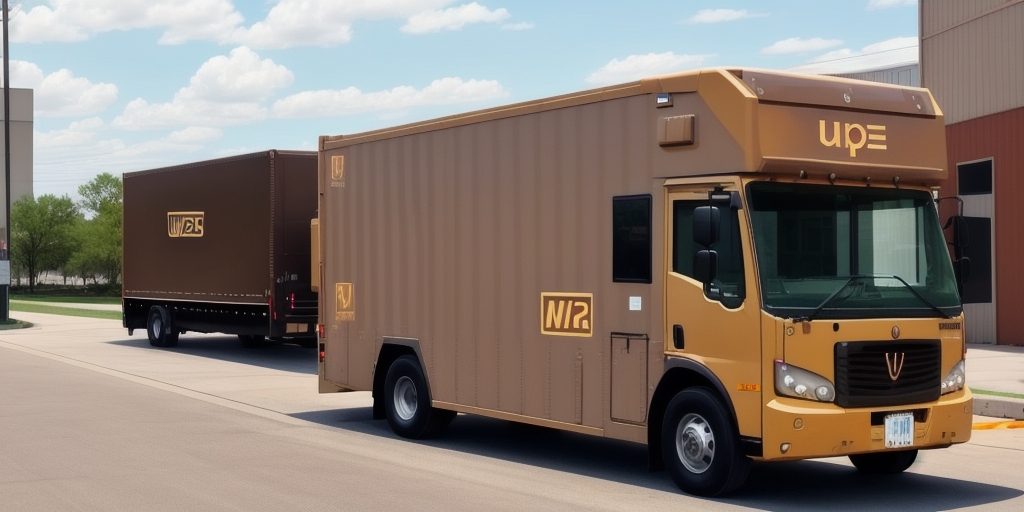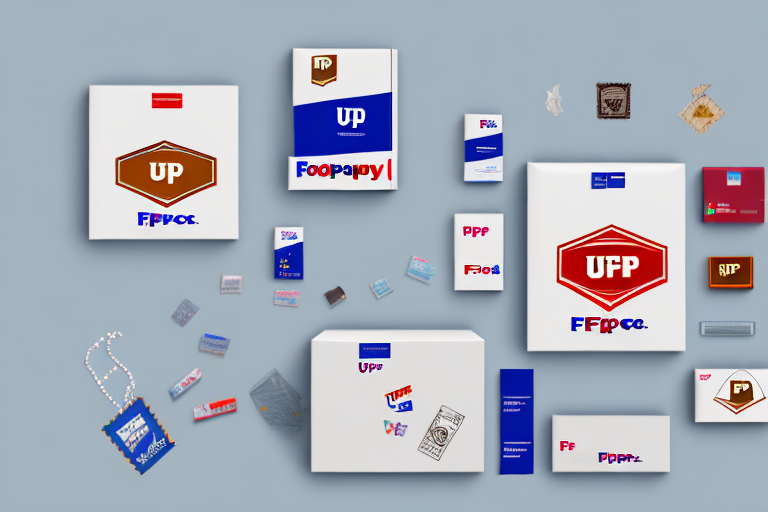Does FedEx Use USPS for Shipping?
Shipping is a critical component of modern commerce, with companies leveraging various services to ensure the timely delivery of goods. Among the most prominent shipping carriers in the United States are FedEx and the United States Postal Service (USPS). A common question that arises is, "Does FedEx use USPS for shipping?" In this article, we delve into the relationship between these shipping giants and explore their operations within the U.S. shipping landscape.
Understanding the U.S. Shipping Industry
The United States shipping industry is expansive and multifaceted, encompassing numerous companies that offer diverse shipping solutions tailored to different client needs. According to the U.S. shipping market revenue, the industry has consistently grown, driven by the rise in e-commerce and global trade.
In addition to major carriers like FedEx and USPS, there are numerous regional shipping companies that provide specialized services, often at more competitive rates for specific types of shipments. For instance, shipping large or heavy items within a particular region might be more cost-effective with a regional carrier than with a national one like FedEx or USPS. It's essential to research and compare various shipping options to identify the most suitable choice for your specific requirements and budget.
FedEx and USPS: Competitors or Collaborators?
At first glance, FedEx and USPS may seem like direct competitors in the shipping market. However, their relationship is more nuanced. While both offer similar shipping services, their operational frameworks differ significantly. FedEx operates as a private, for-profit entity with its proprietary infrastructure, whereas USPS is a government-owned organization funded through federal appropriations.
One key difference lies in their delivery coverage. USPS boasts comprehensive reach, delivering to every residential address in the United States, including P.O. boxes and APO/FPO addresses, thanks to its government mandate. In contrast, FedEx primarily targets business addresses and urban areas, leveraging its extensive air network for expedited services.
Despite these differences, FedEx and USPS collaborate to enhance their service offerings. A notable example is the FedEx SmartPost service, where FedEx handles the initial transit of packages and hands them over to USPS for the final mile delivery to residential addresses. This partnership allows FedEx to utilize USPS's extensive delivery network while providing customers with reliable and efficient shipping options.
Comprehensive Overview of FedEx and USPS Services
FedEx Services
FedEx is renowned for its overnight and express delivery services, catering to both domestic and international shipping needs. Their service portfolio includes:
- FedEx Overnight: Guarantees next-business-day delivery by various timeframes.
- FedEx 2Day: Provides delivery within two business days, ideal for time-sensitive shipments.
- FedEx Ground: Offers cost-effective ground shipping solutions for heavier packages.
- FedEx International: Facilitates global shipping with options like International Priority and International Economy.
- FedEx Freight: Handles large and heavy shipments with LTL (Less Than Truckload) services.
Additionally, FedEx provides value-added services such as package pickup, drop-off locations, printing and copying services at FedEx Office locations, and comprehensive tracking systems that offer real-time updates on shipment status. According to FedEx's Intelligent Shipping initiative, the company continues to integrate advanced technologies to enhance delivery efficiency and customer experience.
USPS Services
USPS offers a diverse range of shipping options tailored to both individual and business needs, including:
- First-Class Mail: Suitable for lightweight parcels and envelopes with affordable rates.
- Priority Mail: Balances cost and speed, typically delivering within 1-3 business days.
- Priority Mail Express: Guarantees overnight delivery to most U.S. addresses, available 365 days a year.
- USPS Retail Ground: An economical option for larger packages not requiring expedited delivery.
- International Services: Includes options like Global Express Guaranteed and Priority Mail International for worldwide shipping.
USPS also offers web-based tools such as Click-N-Ship, enabling users to print shipping labels, purchase postage, and schedule package pickups online. Moreover, USPS has implemented eco-friendly initiatives, including the use of alternative fuel vehicles and recycling programs to reduce environmental impact, as detailed in their sustainability efforts.
Comparing FedEx vs. USPS Shipping Rates
When evaluating shipping options, cost is a paramount consideration. Both FedEx and USPS offer competitive pricing, but the rates vary based on factors like package size, weight, and delivery speed.
FedEx Rates: Generally higher for expedited services, reflecting the speed and reliability offered. FedEx Ground tends to be more economical for heavier packages, providing a balance between cost and delivery time. According to Statista, FedEx's revenue from ground shipping has seen consistent growth, highlighting its popularity among businesses.
USPS Rates: Typically more affordable for smaller, lighter packages, especially with services like First-Class Mail and Priority Mail Flat Rate options. USPS's extensive network also allows for flexible delivery options, such as deliveries to P.O. boxes and on Sundays for certain services. The USPS Pricing Guide provides detailed rate information.
It's advisable to utilize the rate calculators available on both FedEx's website and USPS's Postage Price Calculator to determine the most cost-effective solution for your specific shipping needs.
Choosing the Right Shipping Service for Your Business
Deciding between FedEx and USPS hinges on your business's specific shipping requirements:
- Speed: If rapid delivery is critical, FedEx's overnight and 2-day services are optimal. USPS's Priority Mail Express also offers overnight delivery but is best suited for urgent shipments.
- Cost: For budget-conscious shipping, USPS often provides more economical rates for smaller and lighter packages. FedEx Ground can be competitive for heavier shipments.
- Coverage: For comprehensive residential delivery, USPS has the advantage with its universal delivery network. Businesses operating in rural areas may find USPS more reliable for reaching all customers.
- Tracking and Insurance: FedEx offers robust tracking and extensive insurance options, making it suitable for high-value or sensitive shipments. USPS provides basic tracking and insurance, which may suffice for less valuable items.
- International Shipping: Both carriers offer international services, but FedEx tends to provide more comprehensive options and faster delivery times, whereas USPS offers competitive rates for global shipping.
Evaluating these factors in relation to your business needs will guide you in selecting the most appropriate shipping partner.
Tracking and Managing Your Shipments
One of the benefits of FedEx utilizing USPS for final delivery is the ability to track packages seamlessly. FedEx orchestrates the initial transit of packages until they reach the USPS network, which then handles the last-mile delivery to the recipient's address.
Customers can track their packages through the FedEx website using FedEx's tracking number, which remains valid even after the package is handed over to USPS. Alternatively, tracking updates can also be viewed on the USPS website using the same tracking number. It's important to note that there may be a delay of up to 24 hours before tracking information is updated on the USPS platform.
For any delivery issues or delays, customers are advised to contact FedEx customer service for assistance, as they maintain oversight of the entire shipping process.
Ensuring Safe and Secure Shipping
While FedEx and USPS strive to ensure packages are delivered safely, taking additional precautions can further secure your shipments:
- Proper Packaging: Use durable packaging materials and ensure that packages are sealed securely to prevent damage during transit.
- Accurate Labeling: Clearly mark the recipient's address and include contact information to facilitate correct and timely delivery.
- Insurance: Opt for shipping insurance, especially for valuable or fragile items, to provide financial protection in the event of loss or damage.
- Tracking: Utilize tracking services to monitor the progress of your shipments and promptly address any delivery issues.
Implementing these best practices can enhance the security and reliability of your shipping experience with FedEx and USPS.
Conclusion: Understanding the Relationship between FedEx and USPS
Contrary to the perception of direct competition, FedEx and USPS exhibit a collaborative relationship within the U.S. shipping industry. Through partnerships like FedEx SmartPost, they complement each other's strengths—FedEx's efficient national and international transit networks combined with USPS's expansive last-mile delivery coverage. Understanding the distinct advantages each carrier offers enables businesses and individuals to make informed decisions, optimizing their shipping strategies based on their unique needs.








